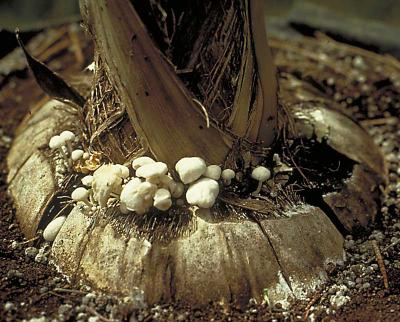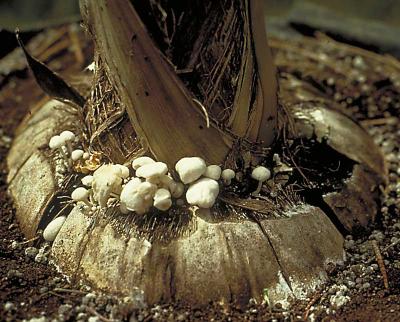

Lethal bole rot (Marasmiellus cocophilus)
In East Africa, Marasmiellus cocophilus causes death of palms up to 8 years old, seedlings being highly susceptible on transplanting to the field. Root infections occur, leading to decay of basal tissues and finally a rot of the spear leaf. On older palms, the first symptoms are a general wilt of the fronds, which remain as a 'skirt' around the trunk. The spear leaf dies and a foul-smelling soft rot develops at the base of the leaves. A dry, reddish-brown rot with a yellow margin is typically present at the base of the bole. Cavities within these areas of rot are lined with mycelium (fungal growth) in young palms, 2-4 years old, but rare in 4-6-year-old palms, and absent in mature palms.
Fungal bodies (like small mushrooms) commonly occur on exposed roots, leaf bases of seedlings, exposed tops of seed nuts and on the soil surface around holes (growing from coconut debris) where diseased palms had been removed 2 years previously. On average, there is only about 8 weeks from the time of onset of symptoms till the death of the palm; this interval depends on the extent of fungal decay in the bole.
Spread occurs through soil, root contact between palms, infected coconut debris and probably by airborne basidiospores (fungal spores). Infection also occurs via wounds.
- Uproot and burn affected palms immediately after detection of the disease.
- Replant with healthy seedlings. This will be successful only if the infested soil is treated.
Marasmiellus cocophilus
